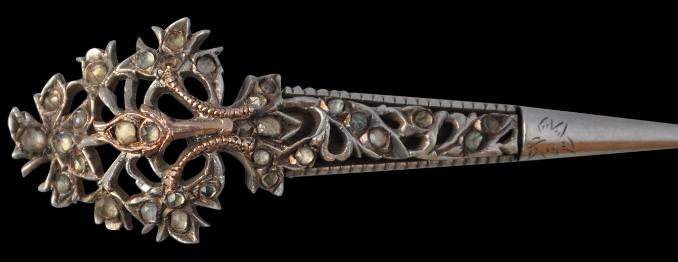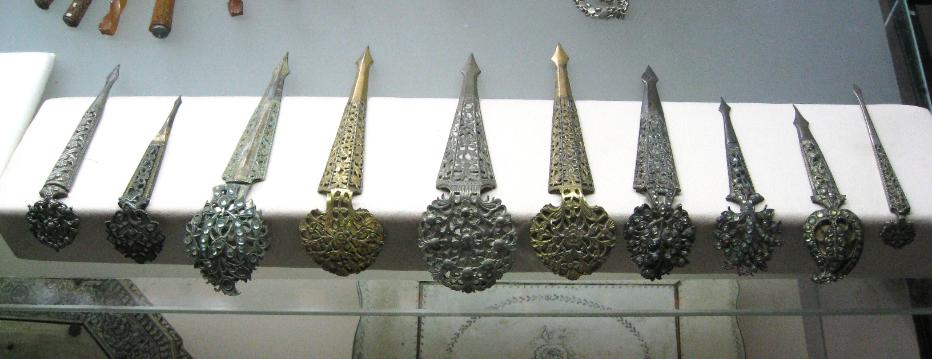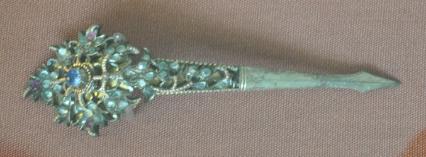
Sri Lankan Hairpin Brooch
Silver & Gold Kondakoora Hairpin/Brooch with Matara ‘Diamonds’
Coastal Regions, Sri Lanka
early 20th century
length: 10cm, weight: 15g
This hairpin of silver partly overlaid with gold and set with thirty stones known locally in Sri Lanka as Matara ‘diamonds’ (white zircons) is typical of a type used in Sri Lanka from the 18th through to the early 20th century. (Matara is a sea port on the south coast of Sri Lanka from where the stones come.) Known as a kondakoora hairpin, it has an arrow-like end and a boteh-shaped finial. A leaf motif is engraved into the shaft. Such hairpins were worn by women in the ‘Low Country’ regions.
Almost invariably, these are wrongly ascribed to India or Turkey and described as turban ornaments. An early photograph below shows a Sri Lankan woman wearing such a pin in her hair. Later, the fashioned developed in Sri Lanka for the hairpins to be worn as brooches and so many, including this example, were fitted with long brooch pins on the reverse.
Three examples are illustrated in Cruse (2007, p. 115). Examples also have appeared in Malaysia where Chettiyar women, particularly in Malacca, wore them. It is not clear however, if the Malaysian examples were made in Malaysia (there were plenty of Tamil jewellers in the Straits Settlements) or if they were imported from Sri Lanka. In any event, the national museum of Malaysia, Museum Negara Malaysia, has seven such hairpins in its collection. Kassim (1988) observes that it was indeed the Chettiyar of Malacca who wore them.
Provenance
UK art market
References
Coomaraswamy, A.K., Mediaeval Sinhalese Art, Pantheon Books, 1956.
Wimalaratne, K.D.G. & D. Gomes,
Costumes of Sri Lanka, 2001.
Inventory no.: 1439
SOLD




Similar hair pins displayed in the National Museum of Sri Lanka, Colombo.

An example currently displayed in the British Museum.
A Sri Lankan woman wearing a similar hairpin, circa 1910.



Scenes from Matara today
A 17th century Dutch church.
A mosque, showing typically colonial-influenced architecture.
An entrance to the old Dutch fort.

